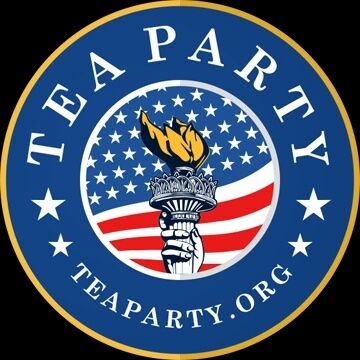
The Tea Party: A Rising Tide
Two years after establishment Republicans invited the populist Palin into their midst, a tidal wave of populist candidates ran for and won seats in state and national government. Running as Republicans, Tea Party candidates moved the party further to the extreme right while retaining the “conservative” label and so normalizing what was a radical split in the party. As they altered the political landscape, they made a candidate like Donald Trump electable.
Tea Partiers formed around a militant mix of fiscal conservatism and libertarian absolutism, distinguishing themselves from their conservative Republican colleagues in their uncompromising approach to policymaking. More interested in obstruction and name-calling than negotiation and governing, they shared the conservative goal of shrinking government, but unlike their colleagues, they sought to avoid collaborations that would taint their ideological purity and so, their ability to be re-elected. The verb “to primary” – meaning to oppose in the party primaries – came into use as GOP partisanship grew more extreme.
In the Tea Party mythology, the party had formed organically around local protests very early in 2009 but suddenly became a national movement following an on-air rant by CNBC reporter Rick Santelli. Santelli amplified those early protests against the government’s plan to bailout homeowners caught in the fallout of the subprime mortgage crisis. By the next day, the National Review’s Kathryn Jean Lopez posted that she was seeing a similar emotional response to Santelli’s rant as that given to Sarah Palin’s speech the year before at the Republican National Convention. Her post was titled “Watch for the Palin-Santelli 2012 signs”.
The idea for a modern Tea Party, however, stretched back to 2002 when Citizens for a Sound Economy (CSE), a group founded and financed by Charles and David Koch, launched a website, USTeaParty.com. The earliest version of the site, dated September 13, 2002, is viewable at the Internet Archive. The site gained little traction and in 2004, CSE split into two groups, FreedomWorks – run by Contract with America co-author Dick Armey – and Americans for Prosperity Foundation, chaired by David Koch. Both organizations, backed by Koch investments, helped organize the disparate Tea Party groups into a national movement. (More recently, FreedomWorks split from Trump’s Republican Party and the Kochs, and had to shut down due to lack of funding.)
Though Sarah Palin disappointed members when she did not run for president, the party continued to win seats in Congress and in state governments in 2012 and 2014. Tea Partiers have remained a visible and influential force in Washington and at the state and local levels. Twice in three years they pressured the party to push the country to the brink of default on the national debt, a dangerous action that risked the country’s financial credibility and the stability of the world economy. It was the clearest sign yet that Republicans in Congress were now operating on a party-over-country platform.
Writing in 2020, Geoffrey Kabaservice, author of a history of the modern Republican Party, wrote that the Tea Party, rather than fading away as some political observers expected, “mutated. It became the Trump movement, which is likely to dominate the Republican Party and have a major impact on politics for years to come.”

